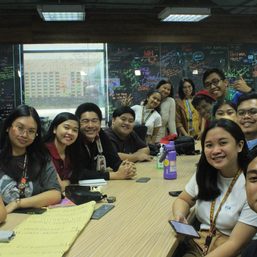SUMMARY
This is AI generated summarization, which may have errors. For context, always refer to the full article.
![[ANALYSIS] University rankings are an illusion](https://www.rappler.com/tachyon/2020/11/university-rankings-november-27-2020.jpg)
University rankings are an illusion that distracts people from the true state of education.
Quacquarelli Symonds (QS), a global higher education think tank, released its 2021 Asian University Rankings (AUR) recently. Its list included over 650 educational institutions, with 14 hailing from the Philippines – 6 of which were from Metro Manila. Many Filipinos were impressed to learn that more universities in our country were now considered among Asia’s best, with others suggesting that this was a sign education in the Philippines had greatly improved.
As impressive as it may seem, however, we must not get too excited when several Philippine higher educational institutions (HEIs) make it to the list.
First, even though more than a dozen universities in the country made it to the roster, access to higher education here is still an enormous struggle to surmount. Last year, Commission on Higher Education (CHED) chairman Prospero de Vera himself said that the participation rate of students in HEIs in the country was merely 33% — lower than neighboring Malaysia and Thailand at 44% and 43%, respectively. This meant that out of every 100 Filipinos who were supposed to be in college, only 33 were enrolled.
This may make the Philippines less competitive compared to other countries, since we have fewer people who are highly literate and well-trained. Moreover, HEIs might focus instead on merely improving their rankings instead of producing critical thinkers and working on their institution’s quality of teaching. This is also detrimental to improving the Philippine brand of education, as we become much too influenced by foreign methods of instruction.
Second, educational institutions might take advantage of university rankings by using them as an excuse to implement anti-student policies. Nine out of the 14 Philippine HEIs included in the 2021 AUR are private educational institutions. It is important to remember that tuition and other fee increases, or TOFI, has become a yearly issue among private HEIs. Together with the “no permit, no exam” policy, TOFI ultimately affects less privileged students, consequently hindering their chances of receiving a post-secondary diploma.
Aside from policies that cause harm to students, these schools usually compete every year with one another to attract more enrollees. This sense of competition enables universities to spend more on beautifying their facilities instead of using their funds on genuinely improving teaching quality and research capabilities.
State-run HEIs could also take advantage of their rankings to implement anti-student policies. Despite their school’s stellar ranking, for instance, students of the University of the Philippines, the highest-ranked Philippine university in the 2021 list, still feel left behind, and are thus calling for the administration to end the semester – to no avail.
Third, university rankings from think tanks like QS and Times Higher Education (THE) were criticized for their methodologies. For instance, QS has overemphasized perceived reputation in identifying scores. Reputation is often determined by surveys, which are considered to be highly subjective.
At the same time, previous rankings also affect an institution’s new ranking, making it easier for so-called top universities to stay high up the list, and arduous for new universities to challenge their supremacy. This could partly explain why the Big Four — UP, Ateneo, La Salle, and UST — always maintain their ranks, while other Philippine universities are placed at the bottom.
Meanwhile, THE university rankings also faced backlash for relying heavily on citations. As a result, HEIs where English is not the medium of instruction found it difficult to score high in the THE rankings.
Aside from methodology, scoring universities as a single, whole entity is unfair to other educational institutions. There are some HEIs that might score low in their overall score but attain high scores in a certain subject; still, they won’t make it to the rankings just because of their overall score. In this case, university rankings are not as reliable as advice from professionals working in a certain field.
Altogether, university rankings are not as ideal as they seem to be. There are still controversies and criticisms over how to rank educational institutions. And even if flaws in methodologies were to be solved, there still are several other bases with which to see the true state of education in Philippine society — from universal access, to student outcome. More importantly, universities must focus on producing open thinkers and able leaders who are capable of solving society’s problems, instead of on increasing their positions in these rankings. – Rappler.com
Joshua Corcuera is a second year accountancy student and student journalist at Adamson University. He aspires to be a CPA lawyer to help defend the oppressed.
Add a comment
How does this make you feel?

![[OPINION] Education for life: Weaving ethics in all subject areas](https://www.rappler.com/tachyon/2024/03/Education-for-Life-Weaving-Ethics-in-All-Subject-Domains.jpg?resize=257%2C257&crop_strategy=attention)
![[OPINION] Limited intake of international students: Is Canada knee-capping its future?](https://www.rappler.com/tachyon/2024/02/tl-canada-forgeign-student-cap-02232024-2.jpg?resize=257%2C257&crop_strategy=attention)

![[Rappler Investigates] Who’s fooling who?](https://www.rappler.com/tachyon/2024/02/rodrigo-sara-duterte-2019.jpeg?resize=257%2C257&crop=167px%2C0px%2C900px%2C900px)
![[EDITORIAL] Ang break-up Valentines ni Sara at Marcos](https://www.rappler.com/tachyon/2024/02/animated-2024-valentines-day-political-divorce-carousel.jpg?resize=257%2C257&crop_strategy=attention)
There are no comments yet. Add your comment to start the conversation.